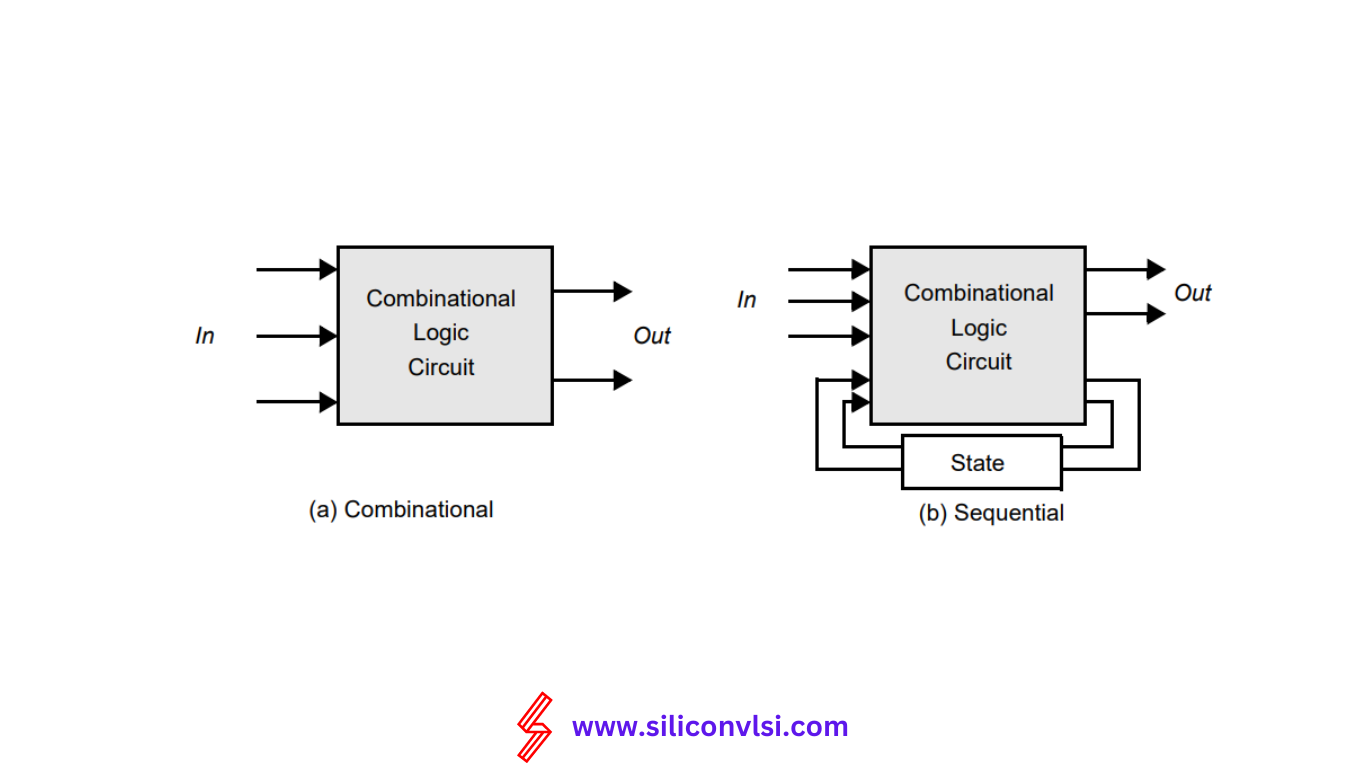Combinational Circuits in Digital Electronics – Logic Gates Explained
In digital electronics, we often work with both combinational and sequential circuits. When you deal with combinational circuits, the output depends only on the current combination of inputs, without considering time. These circuits are made up of fundamental building blocks like NAND, NOR, and NOT logic gates.

Combinational Circuits
Combinational circuits have various applications, including arithmetic operations, data sharing, and code conversion. Examples of combinational logic circuits include adders, subtractors, and comparators.
Sequential Circuits
Sequential circuits are digital logic circuits whose output depends not only on the current input but also on the previous output. They consist of combinational circuits and memory elements connected in a feedback path. Memory elements store binary data, which represents the state of the sequential circuit. Therefore, the output of a sequential circuit is determined by the sequence of inputs and previous outputs over time. A common example of a sequential circuit is the finite state machine. Sequential circuits can be further classified into two types: synchronous sequential circuits and asynchronous sequential circuits.
Difference between Combinational and Sequential Circuit
Here are the key differences between combinational and sequential circuits:
Combinational Circuit:
Output is independent of time and relies solely on the current input.
No feedback is required for generating the next output.
Faster and better in performance compared to sequential circuits.
Less complex due to the absence of feedback.
Elementary building blocks are logic gates.
Mainly used for arithmetic and Boolean operations.
Sequential Circuit:
Output depends on both the current input and the previous output.
Feedback is necessary for generating the next output.
Comparatively slower and lower in performance compared to combinational circuits.
More complex due to the presence of feedback.
Elementary building blocks are logic gates and flip-flops.
Mainly used for storing data.
In conclusion, the main distinction between combinational circuits and sequential circuits lies in their dependency on time and previous outputs. Combinational circuits generate output based solely on the current input, while sequential circuits consider both the current input and previous output.